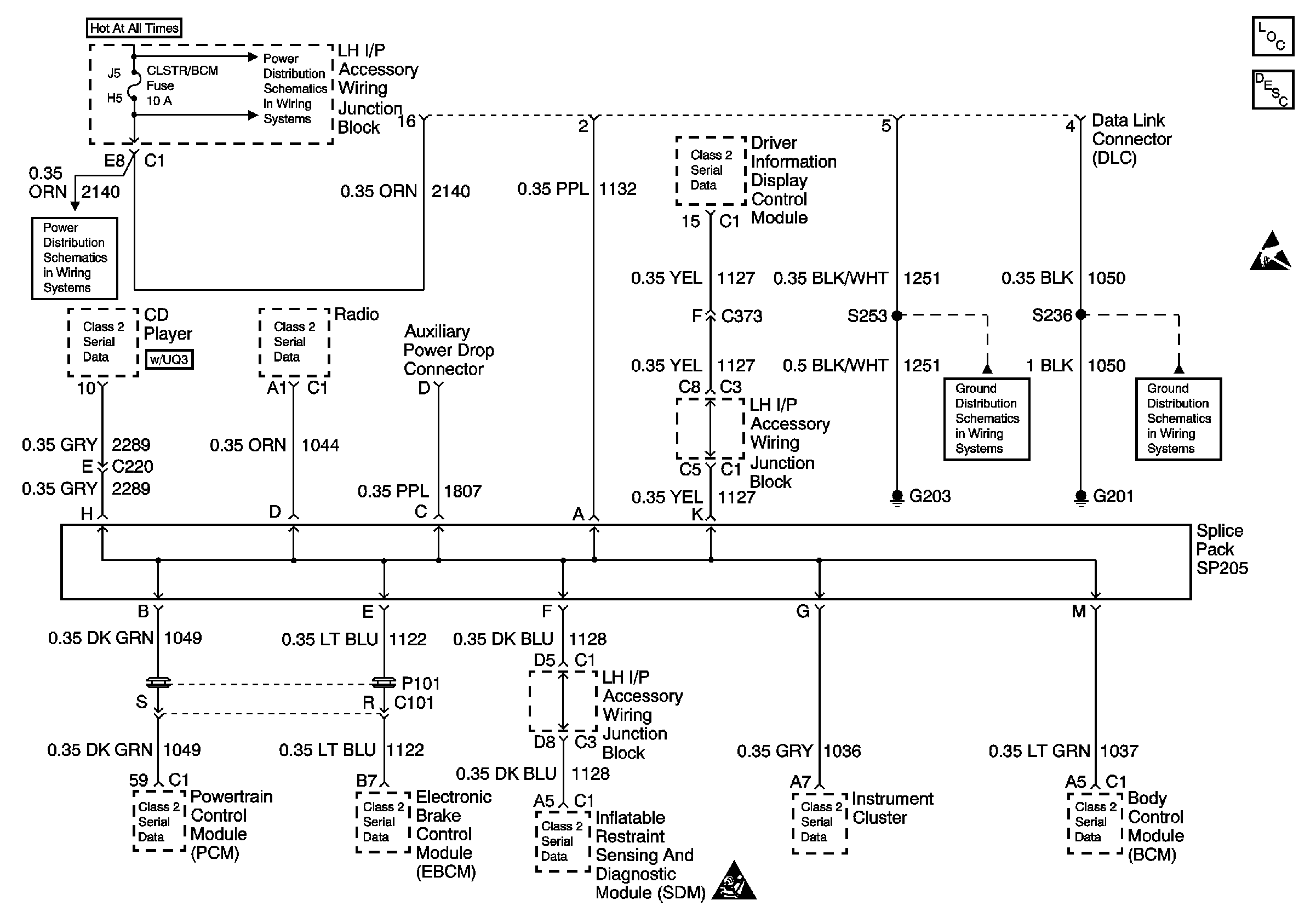Refer to

.
Circuit Description
The vehicle theft deterrent (VTD) system is incorporated within the body control module (BCM). The powertrain control module (PCM) monitors the state of health serial data message from the theft deterrent system to ensure that the PCM to BCM communication is established. If the PCM detects a loss of the state of health message while the engine is running, DTC P1626 will set. DTC P1626 can cause a no-start condition, or normal operation, depending on when the loss of the theft deterrent system communication was detected. The engine will continue to start and run if the condition that set DTC P1626 occurred after the PCM received a valid theft deterrent password from the BCM and had already allowed fuel during the ignition cycle. The engine will start and immediately stall if the condition that set DTC P1626 occurred before the PCM received a valid theft deterrent password. With this condition present, the PCM will inhibit fuel delivery and disable the starter until a valid theft deterrent password is detected. Refer to Vehicle Theft Deterrent (VTD)Circuit Description in Theft Deterrent.
Conditions for Running the DTC
The theft deterrent system has allowed fuel delivery.
Conditions for Setting the DTC
The PCM has detected a loss of the state of health message from the theft deterrent system.
Action Taken When the DTC Sets
The PCM stores conditions which were present when the DTC set as Failure Records only. This information will not be stored as Freeze Frame Records.
Conditions for Clearing the MIL/DTC
| • | The DTC becomes history when the conditions for setting the DTC are no longer present. |
| • | The history DTC clears after 40 malfunction free warm-up cycles. |
| • | The PCM receives a clear code command from the scan tool. |
Diagnostic Aids
Inspect for the following conditions:
Important: Several BCM diagnostic procedures call for disconnecting the BCM and then turning the vehicle ignition to the RUN position. These procedures will result in the PCM setting DTC P1626. Therefore, DTC P1626 stored in history may be the result of previous BCM diagnostic work.
Many situations may lead to an intermittent condition. Perform each inspection or test as directed.
Important: : Remove any debris from the connector surfaces before servicing a component. Inspect the connector gaskets when diagnosing or replacing a component. Ensure that the gaskets are installed correctly. The gaskets prevent contaminate intrusion.
| • | Loose terminal connection |
| - | Use a corresponding mating terminal to test for proper tension. Refer to Testing for Intermittent Conditions and Poor Connections , and to Connector Repairs in Wiring Systems for diagnosis and repair. |
| - | Inspect the harness connectors for backed out terminals, improper mating, broken locks, improperly formed or damaged terminals, and faulty terminal to wire connection. Refer to Testing for Intermittent Conditions and Poor Connections , and to Connector Repairs in Wiring Systems for diagnosis and repair. |
| • | Damaged harness--Inspect the wiring harness for damage. If the harness inspection does not reveal a problem, observe the display on the scan tool while moving connectors and wiring harnesses related to the sensor. A change in the scan tool display may indicate the location of the fault. Refer to Wiring Repairs in Wiring Systems for diagnosis and repair. |
| • | Inspect the powertrain control module (PCM) and the engine grounds for clean and secure connections. Refer to Wiring Repairs in Wiring Systems for diagnosis and repair. |
If the condition is determined to be intermittent, reviewing the Snapshot or Freeze Frame/Failure Records may be useful in determining when the DTC or condition was identified.
Step | Action | Values | Yes | No |
|---|---|---|---|---|
1 | Did you perform the Powertrain On-Board Diagnostic (OBD) System Check? | -- | ||
2 |
Important: : If a loss of the data link connector (DLC) data has already been diagnosed, clear this DTC and continue the diagnosis with Powertrain On Board Diagnostic (OBD) System Check . Are DTC P1631 or any UXXXX DTCs present? | -- | Go to the applicable DTC tables | |
3 |
Important: : The replacement PCM must be programmed. Replace the PCM. Refer to Powertrain Control Module Replacement/Programming . Did you complete the replacement? | -- | -- | |
4 |
Does the vehicle start and continue to run? | -- | -- |
